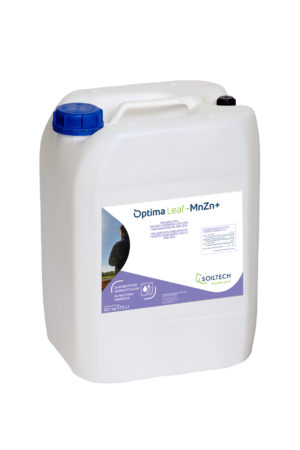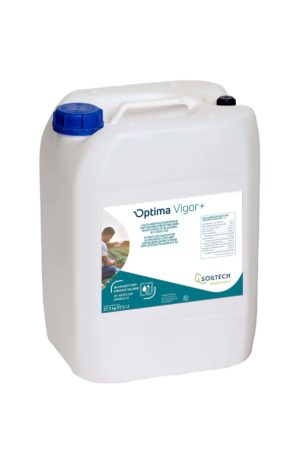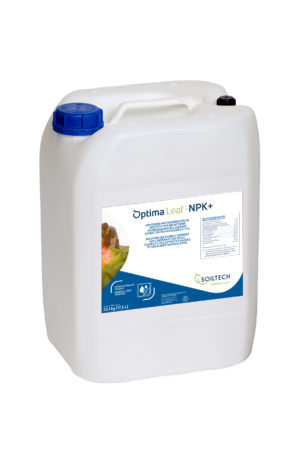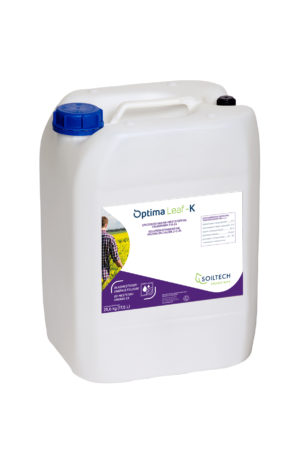In the cultivation of potato, a number of plant processes play a crucial role towards the final yield and grades. The main processes are: chitting, rooting, tuber formation, tubers retention, starch production and tuber bulking. Growers can positively influence these processes by applying the right fertilisers and biostimulants at the right time.
Select a stage for more information
Planting/ridging
Immediately after planting/ridging, the eyes of the seed potato sprout and root development starts. The sprouts develop to the tubers of the plant and therewith form the basis of the plants final canopy size. A well-developed root system provides an enhanced uptake of soil moisture and minerals and as such forms the basis of a good harvest.
A very important nutrient during the initial development is phosphate. A potato plant requires phosphate not only for root development, but also to produce various enzymes and plant hormones that regulate numerous processes in the plant. Phosphate, however, is not yet sufficiently available because of the still relatively low soil temperature in spring.
The availability of phosphate in the soil can be positively influenced by applying Liquid Humus*, which contributes to an increased root development.
Boron is also important for a balanced crop development and numerous other processes. Optima Soil Humi-B* is a pure humic acid with 2.3% boron.
Advice in this stage:
If you have NOT applied Optima Soil Humi-B* or Liquid Humus during the soil preparation phase.
Soil application - Liquid Humus*: 25 litres/hectare
OR
Soil application - Optima Soil Humi-B*: 30 litres/hectare
* These products require national registration and are at this moment only available in The Netherlands.
Emergence of the foliage
During the vegetative growth phase there is a high demand of multiple nutrients. As soon as the foliar coverage is more than 60%, the use of foliar fertilisers is recommended.
When foliar coverage is >60%: 3 applications of Optima Leaf-NPK+*: 2 litres/ha (interval of 14 days)
When foliar coverage is >60%: 3 applications of Optima Vigor+: 3 litres/ha (interval of 14 days)
During periods of stress: Optima Leaf-Amino*: 1,5 litres/ha
For an optimal photosynthesis: 4-10 applications per year of Optima Leaf-MnZn+: 1 litre/ha (interval of 7-14 days)
When nutrient deficiency is possible to occur: Optima Leaf-range: 0,5 – 2,0 litres/ha (interval of 7-14 days)
* These products require national registration and are at this moment only available in The Netherlands.
Relevant products
Tuber formation
This growth phase is crucial for the potato development and final yield. We want as many ‘hooks’ that are attached to the roots to swell and grow into actual potato tubers. Tuber formation is a physiological process that can be optimized by providing a balanced nutrition.
Because the foliage of the potato plant is also still growing, there is a high demand for multiple nutrients.
Advice in this stage:
When foliar coverage is >60%: 3 applications of Optima Leaf-NPK+*: 2 litres/ha (interval of 14 days)
When foliar coverage is >60%: 3 applications of Optima Vigor+: 3 litres/ha (interval of 14 days)
During periods of stress: Optima Leaf-Amino*: 1,5 litres/ha
For an optimal photosynthesis: 4-10 applications per year of Optima Leaf-MnZn+: 1 litre/ha (interval of 7-14 days)
When nutrient deficiency is possible to occur: Optima Leaf-range: 0,5 – 2,0 litres/ha (interval of 7-14 days)
* These products require national registration and are at this moment only available in The Netherlands.
Relevant products
Tuber bulking and starch production.
To optimise tuber bulking, it is important that the potato plant can take up sufficient minerals to sustain starch production. Practical experience has taught that the mineral uptake during this period is not always optimal because of (for example) too wet, too warm or too dry conditions. When soil conditions are too dry, it is not possible for the crop to take up minerals from the soil, as plants can only absorb minerals in a soluble form. At lower temperatures, the plant has a lower vaporisation, therefore also absorbs less water, and therewith fewer minerals.
In all situations, foliar fertilisation is a good way to offer the required nutrients and trace elements that the plant requires for starch production.
Besides minerals and trace elements, potassium is an important element for tuber bulking. Potassium plays an important role in the production and transport of sugars and the accumulation of starch in the tuber. Applying potassium in this period will result in higher yields and an improved quality of the potato.
Advice in this stage:
3 times Optima Leaf-NPK+*: 2 litres/ha
3 times Optima Leaf-K: 5 litres/ha (every 14 days)
During stress: Optima Leaf-Amino*: 1,5 litres/ha
For optimal photosynthesis: 5 times Optima Leaf-MnZn+: 1 litre/ha (every 14 days)
For increased productivity: Optima Vigor+: 3 x 3 L/ha, every 14 days
When nutrient deficiency is possible: Optima Leaf-range: 0.5 - 2.0 litres/ha (every 14 days)
* These products require national registration and are at this moment only available in The Netherlands.
Relevant products
Further maturing
Soiltech does not have specific products for this stage.



